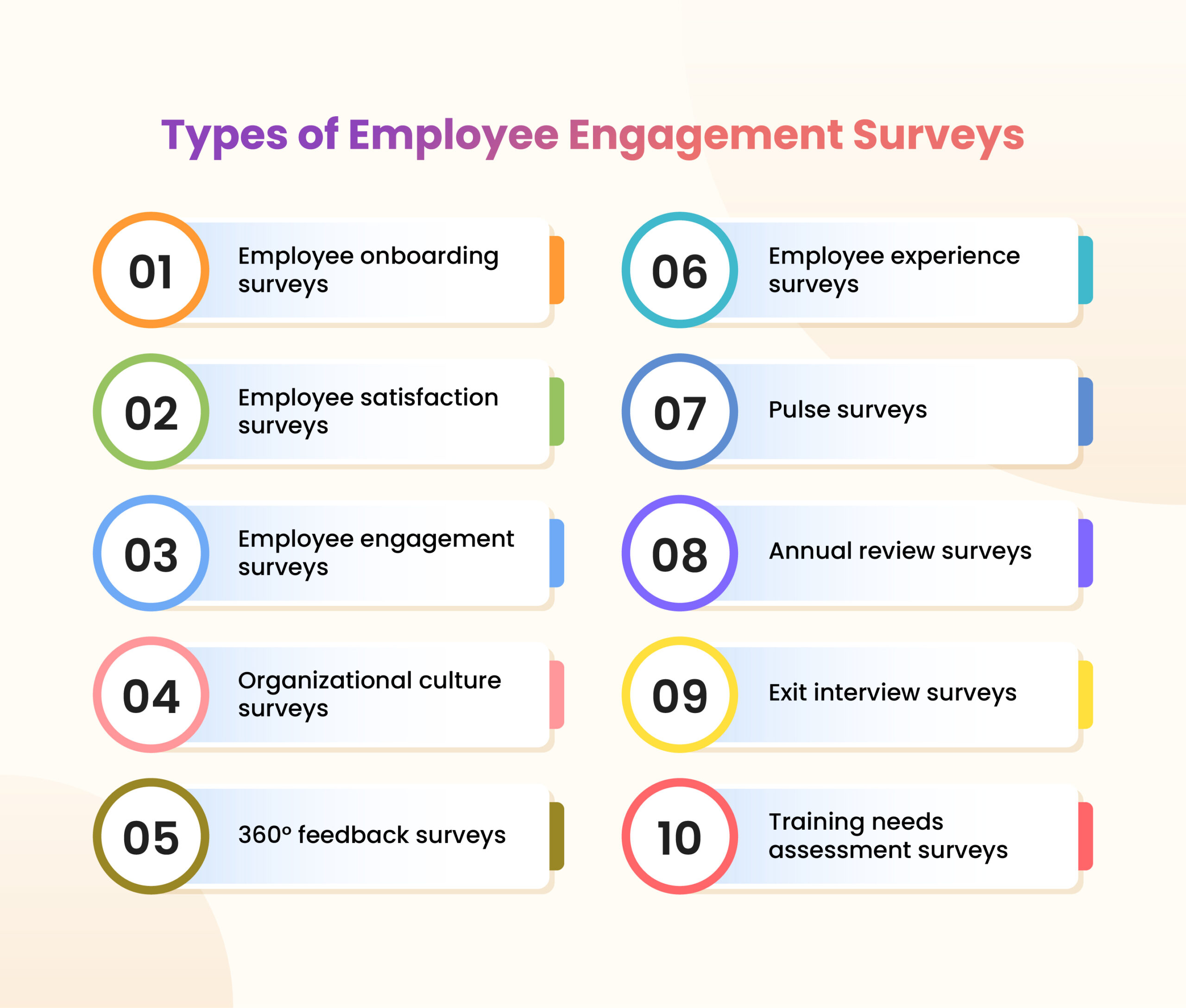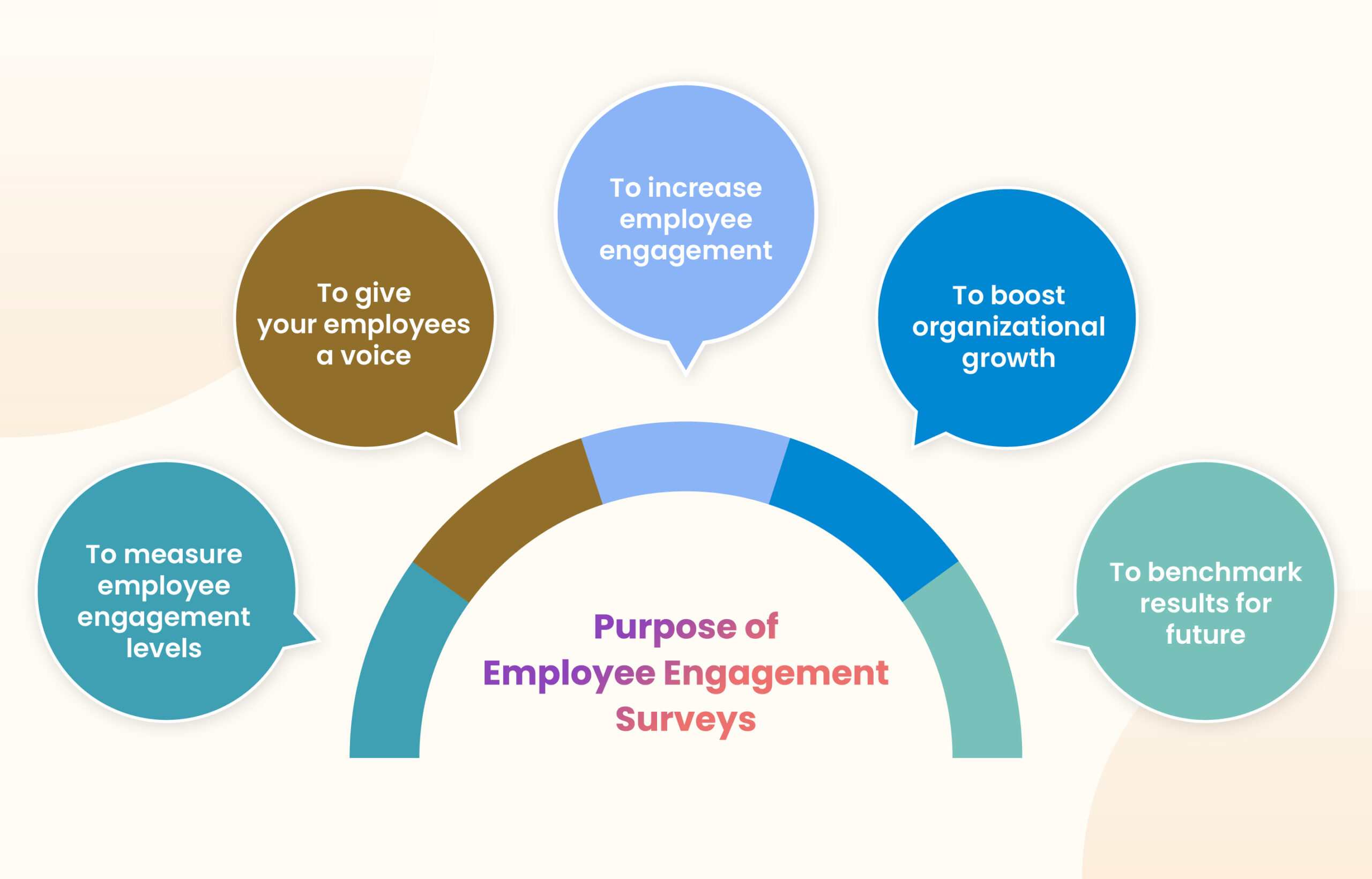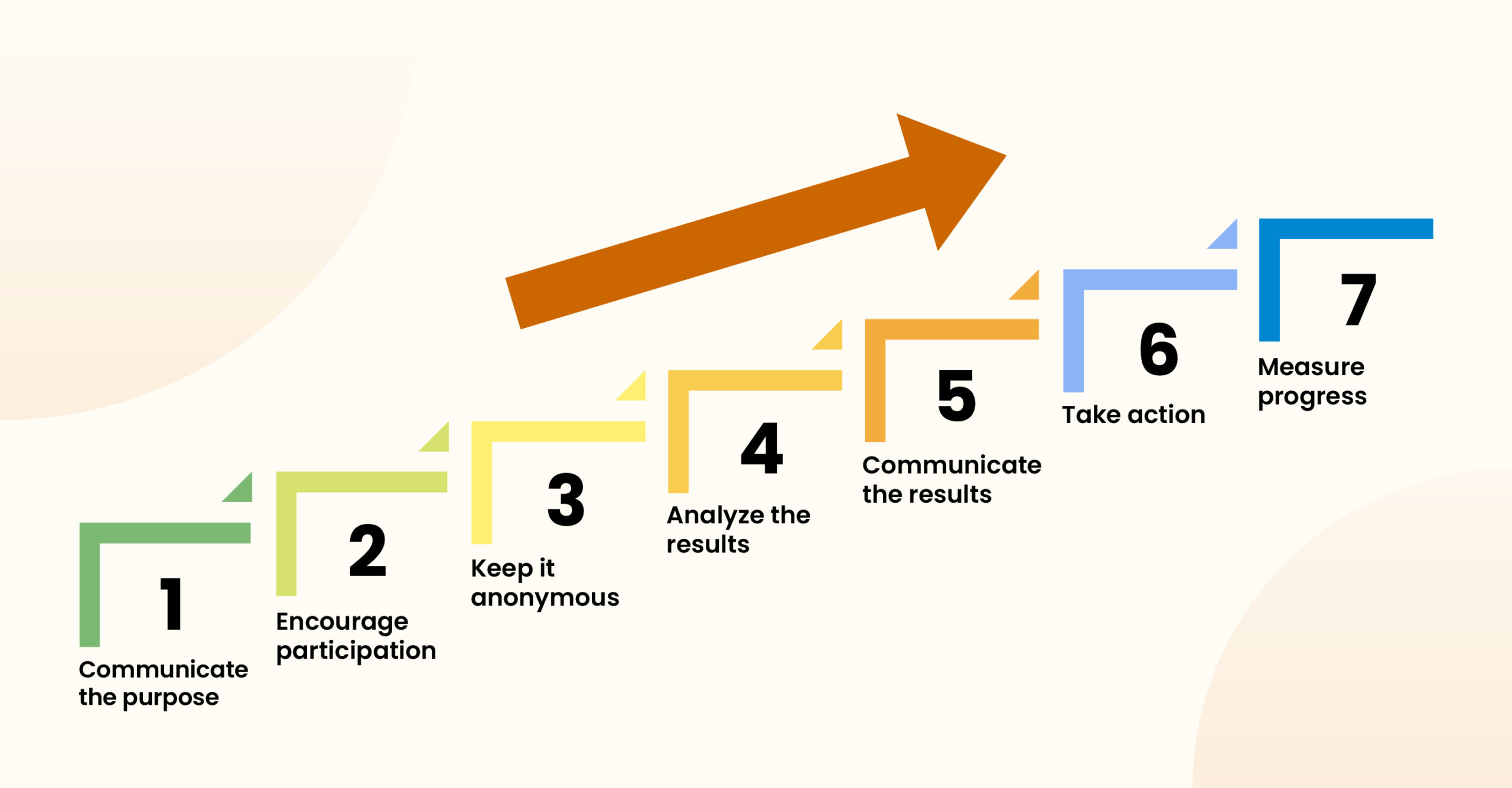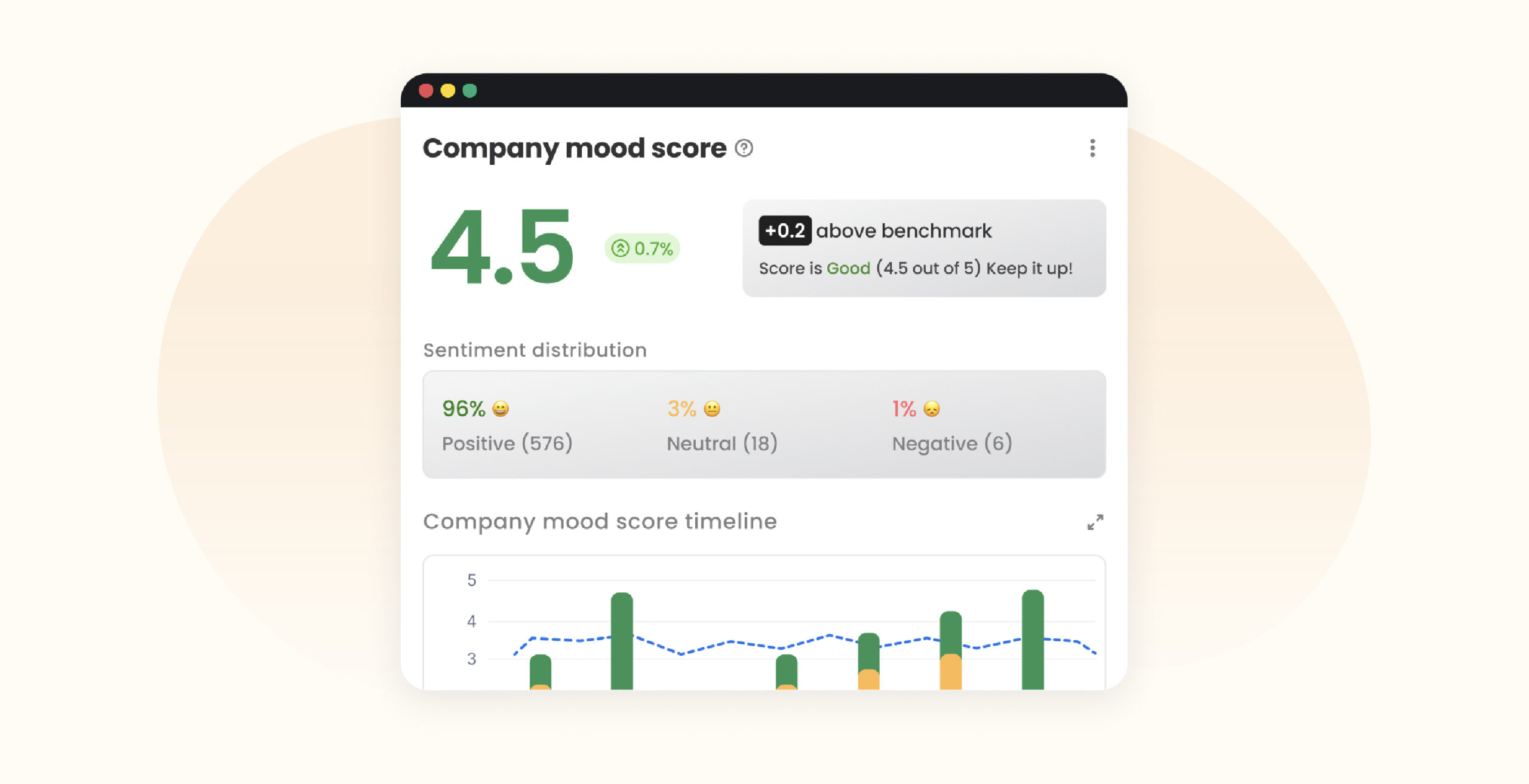Employee engagement is best described as the level of personal investment an employee offers towards their job role or a piece of work.
Many businesses believe that employee engagement is the miracle solution for higher productivity and increased profitability, and indeed it is! But, merely thinking about employee engagement or implementing a few initiatives will not leave any impact on your business. Just like watching a workout video will not make you lose weight.
Employee engagement requires problem identification, thoughtful implementation, finding empathetic solutions, and constant measurement of your initiatives. There is no doubt that high employee engagement leads to higher productivity levels and increased revenue numbers. But, how do you know that your employee engagement initiatives are actually engaging? How to assess employee engagement?
We have dedicated this blog to help you find the most effective method that will aid in making your employee engagement plan work. Companies spend millions on employee benefits, training, and motivation programs. However, simply spending money or giving perks to employees doesn’t help in increasing employee engagement. Only 12% of employees leave their current positions for more money. Businesses often neglect to invest in programs to evaluate and measure the effectiveness of their efforts to build a fully engaged workforce.
An objective and consistent employee engagement survey program provide a valuable tool for measuring and tracking employee engagement levels, identifying the key attributes contributing to engagement, and providing recommendations for ways to increase engagement.
What Is An Employee Engagement Survey?

Employee engagement surveys are tools that measure the current sentiments of employees in reference to their company, team, manager, work environment, job role, satisfaction, and growth opportunities. Employee engagement surveys help gather information that reveals your company’s existing engagement levels and work-culture health.
An employee engagement survey gauges the level to which employees feel engaged to the company through a series of questions. Conducting a survey on employee engagement is essential in determining whether or not your employees are happy with the organization, its goals, and its work culture.
Employee engagement surveys are one of the most remarkable tools that help in measuring the effectiveness of your engagement initiatives. However, a lot depends on the kind of questions you are asking in your employee engagement survey. If you are looking for answers that will help in making a change, then it is really important for you to ask the right questions. Employees who rush through questions aren’t going to give you the most thoughtful or useful answers. Therefore, the questions must be relatable and intuitive.
Conducting employee engagement surveys will give you a view of the drivers that motivate and engage your employees. Companies often do not take full advantage of the information that is available to them to make changes and improve employee conditions. If you do not measure employee engagement in a way that leads to action, you are missing out.
The importance of employee engagement surveys cannot be stressed enough. Regular surveys are integral to a healthy and engaged workforce. There are many other employee engagement survey benefits, including higher productivity levels, happier employees, lower absenteeism, and etc.
Karen Oakey
What Are The Different Types of Employee Engagement Surveys?

The different types of employee engagement surveys are:
1. Employee onboarding surveys: You should never underestimate the power of a thorough employee onboarding program. Your new hires should have a clear vision of their job role, the company’s business strategies, goals, and future plans. An onboarding survey is a great method to learn about the attitude and aspirations of your new workforce and let them learn about the company’s culture and ideas.
2. Employee satisfaction surveys: These surveys aim to extract opinions that the leadership and HR can use to build a positive environment for the employees. The questions in an employee satisfaction survey cover employee loyalty, the scope of growth, or any training opportunities. The assessment data will give detailed insight into how you can retain an employee and what encourages your existing employees to keep working for the company.
3. Employee engagement surveys: As the name suggests, employee engagement surveys help significantly in understanding the employee engagement levels, and the reasons that catalyze them. The engagement survey data will show you all the positive and negative factors that are influencing the engagement of your employees.
4. Organizational culture surveys: These surveys are directed at gaining a comprehensive understanding of how well the employees understand an organization’s culture and commitment to an organization. The surveys assess the level of team unity, bond with supervisors along with transparency about the business outcome.
5. 360° feedback surveys: These comprehensive surveys are powerful tools to measure the internal relationships horizontally and vertically. The assessment data helps in getting a variety of perspectives on a particular employee’s performance. 360° feedback surveys gather feedback from different sources including team leaders, managers, peers, and self-evaluation.
6. Employee experience surveys: Employee experience surveys must have a blend of open-ended questions and closed-ended questions to collect employee feedback that helps relate to their experience. Employee experience can be measured at different milestones in an employee’s lifecycle, like onboarding, training, and development, and also when an employee exits the organization.
7. Pulse surveys: These surveys understand the pulse of the employees by assessing their state of mind related to their job role, communication and relationships, and overall work experience. Pulse surveys are shorter and quicker check-ins that help in predicting attrition and retaining the employees that are a flight risk.
8. Annual review surveys: Annual surveys are a once-a-year procedure that assesses an employee’s overall work performance. These reviews are intended to give a successful performance review, identify strengths and areas for improvement, produce a performance record, and promote a professional development path.
9. Exit interview surveys: An exit interview is often done to offboard an employee on their last day of work. The purpose is to understand the reasons behind the employees’ departures as well as to obtain feedback on their working experience at the organization. This discussion could take the form of a face-to-face interview between the employee and a management or HR representative, or it could simply be a survey that the employee fills out and submits.
10. Training needs assessment surveys: A training needs assessment/survey assists an organization in meeting its personnel efficiency objectives. It closes the skills gap between employees and the skills required by the job and department. The training needs assessment survey can also serve as a foundation (benchmark) for measuring the effectiveness of the training provided. After the training, you can re-administer the training needs survey to assess if there was an improvement in performance/skills as measured by the survey.
“It’s essential to build in different types of pulse checks through onboarding surveys, stay interviews, exit interviews, and adding quick questions to answer weekly. Real-time data allows companies to be proactive vs. reactive when addressing issues. Ideally, implementing complete employee lifecycle surveys is vital.” – Karen Oakey, People-centered HR.
What Do Employee Engagement Surveys Measure?
Employee engagement surveys measure how employees are feeling about the following organizational drivers:
 Communication
Communication
Employee engagement surveys help in identifying and closing communication gaps among the workforce. These surveys can be conducted across several levels to eliminate any kind of barriers that might stand between employees and management. Employee engagement surveys accurately give you an idea about how aware your workforce is regarding their goals. Candid, frequent, open, and timely communications about your company’s vision, goals, and strategies help employees feel connected to the organization. And everyone wants to feel like they are part of the in-crowd.
 Training
Training
Employee engagement surveys also play a significant role in identifying the training needs of the workforce. HR leaders can obtain a very clear list of skills that employees wish to learn and act on their skill development plan in a structured manner. A learning and development plan built based on employee engagement survey data guarantees an increased level of engagement.
 Respect
Respect
Remember, your employees are the ones who do all the work. Therefore, it is really important that they feel valued and heard. Employees choose to work for an organization and they should feel that their work is being respected. Being actively involved in the process makes employees realize that they have a stake in the company and that their opinions are valued.
 Fairness
Fairness
Employee engagement surveys help in eliminating bias and allow you to understand whether the employees are facing any bias at work. These engagement surveys maintain the anonymity of the employees allowing them to express their opinions and thoughts without the fear of judgment. HR professionals can take data-backed decisions with the help of these surveys and build a customized plan of action accordingly.
 Recognition
Recognition
A study suggests, “66% of employees say they would “likely leave their job if they didn’t feel appreciated.” This is up significantly from 51% of employees who felt this way in 2012.” Employee engagement surveys also represent the levels of enthusiasm and connection employees share with their organization. It’s a measure of how motivated people are to put in extra effort for their organization, and a sign of how much pride they feel for their company.
“Data is the bomb when looking for trends in engagement through employee surveys. Some important areas to measure through employee engagement surveys are the eNPS, happiness, and outlook in their role, career path, manager(s), benefits, COVID or safety precautions, company mission, vision, values, as well as asking for subjective feedback on what’s important to them, how to improve the company or what they’d like to see offered.”
What Is The Purpose of Employee Engagement Surveys?

The purpose of employee engagement surveys is to gather insights into what matters the most to your employees and take constructive actions accordingly. Additionally, to ultimately increase employee engagement and, in turn, boost organizational productivity, growth, revenue, etc.
Let’s read in detail, the purpose of employee engagement surveys:
- To measure employee engagement levels
The primary purpose of engagement surveys is to measure the engagement level of your workforce. Measuring the key drivers of engagement will allow you to assess whether your employees are actively engaged or actively disengaged. Some commonly assessed factors of employee engagement are recognition, pay, and benefits, advancement, job role, training and development opportunities, work environment, etc.
- To give your employees a voice
Engagement surveys are critical because they give employees a platform to share their opinions openly. It is an opportunity to establish two-way communication and encourage the development process of employees by giving them a direct voice to the management team. Being actively involved in the planning process makes employees realize that they are an important part of the company and that their opinions are valued.
- To boost organizational growth
Measuring areas such as employee satisfaction, working environment, and management/leadership effectiveness will give you tangible objectives for change. For example, a specific department might rate very high on engagement and by analyzing the data you can gain insight into how they are achieving it and implement the findings throughout the organization.
- To benchmark results for future
Employee engagement survey data will allow you to set benchmarks for comparison purposes. You can look at the results and compare them with industry-specific data to gain an understanding of how your company is performing. Benchmarking will also allow you to identify whether any issues are specific to your company or are industry-wide. If the data present that only 20% of your employees are satisfied with development opportunities you can compare this to the results of other employers to see if this is a typical finding or one that requires attention.
Employee Engagement Survey Best Practices
Your employees are the torch bearers of your company, each of them has a role to play in your organization’s growth. While most companies focus a lot on hiring the right talent, very few actually pay attention to how these new hires fair as their journey with the organization progresses.
You obviously want your employees to believe and work towards the values and mission of your company. It is reasonable to expect their commitment towards work. But, to do so, they need to know and feel that the organization they’re relentlessly working for cares about them. Because they are invested in providing the best for their employees.
And that’s exactly where getting to continually learn from your employees comes into play.
The best way to know what an employee needs to remain engaged at work is to ask them about this at an efficient scale. That is when you need to start asking employee engagement survey questions to know your employees.
But a survey isn’t just about asking a set of random questions. It’s about asking the right set of questions and taking out the best actionables. In this blog, we’re sharing some of the best employee engagement survey questions you need to ask in your organization.
How To Build Employee Engagement Surveys?

If you have never conducted employee engagement surveys or have little experience in creating one, these simple steps will help you commence the process:
 Know the purpose
Know the purpose
Like most projects, it requires planning and thought. To obtain the most accurate results, it is important to think about the exact purpose of employee engagement surveys and how that information is going to be used.
 Time it right
Time it right
The time frame in which you want to conduct the survey is critical. The key to effective survey development is encouraging employees to consider their current experiences in a broader context. Consider what events are happening in your organization that you want to learn more about, and create surveys to go with them.
 Length & frequency
Length & frequency
Do not elongate your surveys. Your employees won’t feel like completing them. Best employee engagement surveys are short and straight to the point. You can ask straightforward questions rather than asking long-winded ones. It will keep the responses and actions of employees and the organization clear.
A survey can provide essential details about your company. However, choosing only a few survey types most relevant to your business and goals is crucial. For example, conducting an annual review likely won’t tell you enough about your company, while monthly surveys with 30 questions can lead to survey fatigue. There is a delicate balance between how often to administer surveys and how long each survey should be.
 Craft thoughtful questions
Craft thoughtful questions
Engage employees by positioning your organization where communication is a two-way street. Because if you don’t, your surveys won’t give you the results you hope to achieve. Include questions in a human-centric manner instead of prioritizing rigid and traditional ways. Set a tone of empathy in your surveys that makes employees feel that the organization is candid, personal, and connected with them.
Once you have decided the purpose of employee engagement surveys, you can target those specific areas and ask relevant questions. It is a good idea to have a combination of both open and closed questions to get the most amount of data possible and use clear and simple language. Keep reading to discover an exhaustive list of best employee engagement survey questions to help you get started with your plan.
 Select a format
Select a format
To receive actionable results for each survey and avoid survey fatigue, determine which survey question format to administer. Most companies find multiple-choice employee surveys helpful because the uniform responses are easy to compile and analyze. You can also use open-ended question surveys, although these can be more difficult to aggregate and collect meaningful data from.
How To Conduct Employee Engagement Surveys?

There are a few crucial points to bear in mind before launching your employee engagement survey:
1. Communicate the purpose
The purpose of the engagement survey should be clear to both the conductors and the participants. Determine answers to the following questions: What is the purpose of the survey? What steps will be taken when the survey has been completed and analyzed? What is the anticipated timetable for events?
2. Encourage participation
Make certain that there is a high level of participation. Make your employees realize the importance of providing honest feedback and how it can affect both the organization and their comprehensive growth in the company.
3. Keep it anonymous
Building trust in an organization should be the first step for any employee engagement activity. It gives the employees liberty to be open, straightforward, and direct in addressing the questions in the survey. And when they are transparent in their feedback, an organization can take corrective measures to ensure that employees stay engaged.
You will not get honest answers if the survey doesn’t promise anonymity. It is key for employees to be able to provide their honest thoughts and opinions, therefore ensuring their answers are anonymous. It is also important to think about the design of the survey.
4. Analyze the results
Once you receive all the data, you will then need to examine the results of the survey. From the data gathered, you will be able to see if patterns or trends are affecting the business or specific teams.
5. Communicate the results
Tell your employees what were the findings that came out of the survey. They will be interested to learn about the opinion of their colleagues and whether it aligns with their thinking.
6. Take action
Don’t let the results get added to just another folder on your computer. Crack the numbers and see what initiatives can be taken immediately to improve certain problem areas.
7. Measure progress
Once you have implemented a measure or strategy, you need to make sure that you keep track of the impact and whether it is meeting its goal. You can set benchmarks for plans and keep track of the year-on-year progress.
How To Increase The Effectiveness of Your Employee Engagement Surveys?

Here are a few best practices to keep in mind when conducting employee surveys to maximize their effectiveness:
1. Capture their interest
It is best practice to keep the survey short, simple, and crisp. If an employee engagement survey is way too long, people will only run through questions and very quickly lose interest. This will not allow any valuable data to act on.
2. Get everyone involved
It is beneficial to invite all members of staff to get involved. Rather than just focus on senior members of a team, run an organization-wide survey to be able to understand how employees across different teams, geographies, and experience levels perceive the organization.
3. Don’t rush them
Sharing the survey at lunchtime or on the weekends and expecting them to fill it in by the close of play will probably only have a few responses. Give them a week or two to do it so they can give it the attention it deserves.
4. Actions speak louder than words
It is useful to tell your employees how committed senior leadership is to act on the survey results and how willing they are to make changes based on the findings. Managers can explain the value of the survey in group meetings or in one-on-one sessions.
What To Do With Employee Engagement Survey Data?
Identify Gaps. Upgrade. Repeat.
If you work for an organization with fewer employees, you’d wonder “why to measure engagement in such a small organization.” Because it is easier to connect with individuals and ask them how they are doing, right? Or even at organizations with a large workforce, you’d think “surveys seem too time-consuming and measuring it will consume a lot of your bandwidth.” A common conclusion would be that we would not understand the ROI of the surveys and not see any distinctive impact on performance.
So the question arises, “why measure employee engagement in the first place”?
When you measure employee engagement accurately, the HR team can analyze them and make impactful actions that promote the work and people. Many organizations use surveys as a tool – to see development in organizational growth, employee retention, and increased productivity.
One of the key benefits of employee engagement surveys is that it allows the leaders and HR heads to gather feedback at scale and measure it accurately. This step is necessary as it portrays the voice of the employees rather than hearsays under the bushes. Engagement surveys provide enough data to implement/upgrade initiatives and turn things around.
Furthermore, if you miss out on measuring employee engagement, then you skip the golden opportunity to take precise actions to enhance an employee’s experience and the company’s culture. Because if you do not acknowledge your employees’ opinions through surveys, they will take it into their hands and voice their opinion on social media, public forums like Glassdoor, etc. It might hamper the organization’s credibility and work culture.
It’s best to work together with your employees and develop a clear plan of action that helps address their issues. You can use the data to shape your workplace culture, offerings, structure, mission clarity, or leadership approach. Once you have identified the skill gaps, communication gaps, recruitment needs, etc., it is time to revisit your employee engagement strategies. This is a great opportunity to help an employee excel in their current role or find a better-suited role for them within the organization.
Engagement initiatives should not go unmeasured, the survey data should serve as benchmarks for your future business plans. HRs can now leverage new-age technologies that help measure the effectiveness of your engagement surveys and allow you to identify benchmarks for your plans.
90 Sample Questions for Employee Engagement Survey
If you fail to prepare a well-crafted employee engagement survey template, you might risk creating confusion about how your employees feel. Furthermore, the data collected will now serve no value, and you will have wasted precious time and resources for inaccurate results. Your survey goal should be to improve employee experience, but you can’t do that if you don’t have accurate details about their needs.
To help you get started on the right path, here are some employee engagement survey example questions for key organizational drivers and important employee lifecycle stages:
Key Themes & Related Employee Engagement Survey Questions
Personal Growth & Development
1. Have you achieved any career goals in this job in the past one year?
2. Would you like us to provide you with opportunities to participate in certifications, courses, workshops, webinars, etc?
3. On a scale of 1 to 10, how challenging do you feel in your day-to-day job responsibilities?
4. On a scale of 1 to 10, how satisfied are you with your work-life balance?
Company/Organization
5. What was the foremost reason you joined this organization?
6. What, according to you, is the purpose of this organization?
7. On a scale of 1 to 10, how transparent is the organization about its performance, numbers, attrition, etc?
8. On a scale of 1 to 10, how proud are you to be associated with this organization?
Manager
9. Have you been recognized by your manager in the last 6 months?
10. Has your manager clearly communicated your OKRs to you?
11. On a scale of 1 to 10, how receptive is your manager to upward feedback?
Work Environment
12. How many friends do you have at work?
13. On a scale of 1 to 10, how likely are you to refer someone to work in this organization?
14. On a scale of 1 to 10, how respectful are your team members with each other?
15. On a scale of 1 to 10, how much do you enjoy working here?
Important Employee Stages & Related Employee Engagement Survey Questions 2022-23
 Evaluate the onboarding experience of your new employees
Evaluate the onboarding experience of your new employees
Employee onboarding is undoubtedly one of the most important phases in any employee’s life cycle at an organization. This is the process by which a new employee is rightly initiated into the role they’re hired for.
According to our State of Employee Onboarding Report, 1 in 10 employees has left a company because of a poor onboarding experience, which typically tends to last for over a month on average after a hiring process of 36 days minimum.
The best way to ensure that your onboarding process is up to the mark is to continually survey your new hires.
Here are some sample employee engagement survey questions for your new employees:
16. Was induction useful to understand the organization better?
17. Were you able to understand the expectations of your role at the organization?
18. Do you think the organization’s policies and benefits are employee-friendly?
19. What is the one thing you’ve experienced that you would want us to change?
 Understand the experience of your tenured employees
Understand the experience of your tenured employees
Employee surveys are to understand the experiences of all employees in the organization – and that includes the ones who have been on your side for a while now. Your tenured employees will be able to give you an in-depth overview of what working for your company feels like. These employee engagement survey questions are about management and how they have played their role in preventing employee turnover.
Include questions such as the following in your employee engagement surveys to get insights from your current employees:
20. Are you treated fairly by your superiors in the organization?
21. Are you comfortable with the organization’s culture and values?
22. How would you rate your growth at the organization so far?
23. Would you recommend this company to your friends & family as a company to work for?
24. If you were to leave this organization tomorrow, what would the reason(s) be?
Pro tip: To understand their responses to questions for employee surveys in a better way, you can segment them based on their tenure at the organization. For example, someone who has just completed a year vs someone who has been with you for five years is going to have different responses to the employee engagement survey questions.
 Know if your employees like doing the work they are responsible for
Know if your employees like doing the work they are responsible for
There is a great quote by Steve Jobs in which he said, “The only way to do great work is to love what you do”?
Being happy and content with the kind of work your employees are doing, is going to ultimately act as their productivity booster.
Only if they are able to enjoy their work, will they be able to deliver the best results. Otherwise, they will just finish up the tasks assigned with a negative mindset, which is obviously going to prevent them from exhibiting their true potential and eventually becoming a disengaged employee.
These are instances when it’s time to ask employees questions about the management and the organization. These are tough questions to answer which is why anonymous surveys help in streamlining the process for employees. You can also take this moment to ask your employees about how they like their current roles and responsibilities. The idea is to create a culture of feedback collection to help fuel productivity.
Here are some employee engagement survey questions you can start with:
25. Do you feel your organization’s policies and benefits are fair to you?
26. Do you feel overwhelmed at work?
27. Do you have all the information and resources necessary to do your work efficiently?
Pro tip: Apart from closed questions, add open-field questions that let employees freely express their thoughts as well as share comments alongside their answers.
 See if your employees are getting enough growth opportunities while working
See if your employees are getting enough growth opportunities while working
Collect feedback from your teams and employees about the personal and professional growth opportunities offered or presented to them at your organization. This is going to give you an in-detail overview of employee satisfaction and also let you estimate their average lifecycle with the organization.
Some of the employee engagement survey questions to gauge this include:
28. Do you feel your work makes good use of your skills and abilities?
29. Are you given the freedom to make decisions about how to do your work?
30. Have you accomplished any career goals in the last six months? If so, please write them down.
 Know if your employees feel comfortable in the team they are a part of
Know if your employees feel comfortable in the team they are a part of
Only if employees feel comfortable with their managers and colleagues can they work to the best of their abilities. Strong connections with one’s teams will help foster a sense of belongingness. This is going to in turn, motivate them to contribute to meaningful shared goals within the company.
If an employee is not completely comfortable in their current team, it is going to affect and hinder their work and productivity – which is ultimately going to affect the company’s overall productivity. You obviously don’t want that!
And so, you need to collect feedback from your employees during these surveys about their comfort and compatibility with the team they’re part of as well.
Include these employee engagement questions in your next survey:
31. Do your co-workers have the skills and expertise to do their jobs well?
32. Do you feel comfortable voicing your opinion in the team meeting?
33. Do you enjoy working with your team?
 Know if you’re making employee engagement efforts in the right direction
Know if you’re making employee engagement efforts in the right direction
You’ve probably conducted multiple such surveys in the past (or not) and made a few alterations and additions to your policies for the betterment of your employees.
However, you need to be certain that the efforts you’re putting in are reaping the desired results. You want your company to only keep moving forward by implementing the best workplace practices and promoting a healthy work culture.
How do you know if the efforts made are actually working? You know the answer already – ask your employees!
Here are some example questions to get a better understanding of this:
34. Have you seen any positive change since we started collecting employee feedback? Name three of the most positive changes.
35. Do you think that day-to-day decisions here demonstrate that quality and improvement are our top priorities?
36. Are there some things we are doing great here?
 Know if your employees are happy with their organization
Know if your employees are happy with their organization
Find out what attracts people to your organization and emphasize that throughout the recruitment process. You must be aware of your organization’s strengths—as well as its limitations.
The questions in this section are specifically designed to assess your employees’ engagement with your firm, as well as their identification with corporate ethics, your mission statement, and their loyalty.
37. What was your primary reason for joining our organization? Follow it up with two or more additional reasons.
38. How probable is it that you would leave this firm if another company offered you a 5% raise? Provide a percentage.
39. Do you believe our organization serves a larger purpose than just making money? If so, what do you think our goal is?
40. Name three of our company’s greatest strengths that you believe we should emphasize more.
The next 50 free engagement survey questions are here!
download nowHow To Choose The Right Employee Engagement Survey Tool?
Now, you have gained a complete understanding of the significance of conducting employee engagement surveys. It is equally important that you conduct them in the most effective manner so that they bring the desired results. With numerous engagement survey tools available in the market you would naturally want one that offers a unified portal, has the ability to evolve as your organization expands, is easily integrable with any platform of your choice, and offers a smooth and easy user experience.
Below we have listed a few features that an ideal employee engagement survey tool must have to help you derive meaningful results:

Sentiment analysis to capture the accurate mood of your employees
Companies can lose employees without knowing why they left. So, it’s important for both the company and the employees to know how the employees feel about the company. In a world that focuses on the employee, the best employers treat their employees like internal customers. So it makes sense to use sentiment analytics to get your employees more involved.
Sentiment analysis uses natural language processing, text analysis, and computational linguistics to find, extract, measure, and study affective states and subjective information. It can take away at least some of the guesswork about how employees feel about their jobs.
What does Leena AI offer?
At Leena AI, open-ended employee feedback is analyzed with the help of AI to find hidden insights. With smart analytics, you can find out what your employees are talking about and what issues need the most attention.
Engagement customized for each stage of the employee lifecycle
The employee lifecycle is a continuous cycle, and how engaged an employee is at each stage affects the next stage. For example, an employee who is leaving the company but still has a good relationship with it could suggest a candidate for their replacement or for a role in the future. And research shows that internally referred employees stay at the company longer and are happier with their jobs. So, it’s important to have a system in place to engage employees through surveys at every stage of the life cycle. This will help with recruitment, retention, and productivity in the long run.
What does Leena AI offer?
Leena AI knows that each stage of an employee’s life cycle has its own challenges, reasons for engagement, and needs. Our conversational engagement surveys focus on these specific drivers of engagement and also take into account information from other connected systems, like performance management systems, onboarding systems, etc.
Real-time actionable insights to future-proof engagement plans
Employee engagement surveys can fetch you a lot of feedback data. Using a survey solution with feedback heat maps is a great way to find pain points quickly that might not be obvious. This is true even for categories with high survey scores, because a closer look might reveal small problems that could grow into bigger ones. When looking at the data through an AI-powered survey tool, digging deep into each survey category will help you find insights that might get overlooked during a manual analysis.
What does Leena AI offer?
Leena AI analyzes employee feedback using AI to give real-time insights on engagement on an incredibly intuitive dashboard. The insights help HR teams, people managers, and people in charge take quick, targeted actions and respond quickly to employee problems and requests.
An interactive interface to keep employees engaged
Employees believe in continuous feedback in real time and connections that last. Unlike the annual performance review platform, regular pulse surveys using ML and AI technology make them feel valued, recognized, and emotionally invested. Companies are now using these tools to make intriguing feedback systems that don’t look like boring Q&As and instead look like interesting conversations with employees in their preferred language.
Interactive employee engagement software is a type of application program that companies use to make their employees happier at work and retain talented people on the job. The goal is to get employees to care about their organization’s mission and culture, which will make them more productive and effective.
What does Leena AI offer?
Leena AI using machine learning and natural language processing technology helps improve employee happiness and retain your best employees by proactively identifying and solving their problems. The AI-powered engagement surveys inform you about unhappy employees so that you get to know about their challenges and problem areas instantly to solve them.
Create data-backed actionable plans to bring impact
No matter what an organization’s goal is with its action plans, a well-organized strategy will always produce the best results. The best employee engagement survey software will assist HR professionals in slicing data and recommending solutions to each identified problem. This can also assist HRs in tracking their success and developing a future-proof employee engagement plan centered on fixing accurate problems.
What does Leena AI offer?
Leena AI manages entire employee engagement survey programs within the same system. To efficiently manage employee engagement projects, track your progress, take actions, and assign tickets to team members all within the same system.
Some additional features that your engagement software should have:
Conversational interface
Easily integrable
24×7 customer support
Scalability
Multilingual
Anonymous surveys
Textual answers
To Sum Up
Businesses across the globe are now prioritizing employee experience as much as customer experience. Happy employees indeed add to the revenue numbers. Therefore, adopting and adapting to new methods of employee engagement is necessary. Traditional employee engagement surveys are tedious and time-consuming. It is time to embrace an all-new and smart alternative that is quick and gives real-time results. Customized and interactive AI-powered conversational surveys are taking over the old methodologies of conducting annual surveys. These intelligent surveys are quick, efficient, emotion sensitive, interactive and analytical on their own.
If you are struggling with engagement surveys and tracking the results, it’s time to approach your management with an improved and innovative idea. Leverage the advantages of new-technology that persistently surprises the world with its smart solutions.
“Employee engagement may change to employee experience, similar to how customers anticipate a personalized trip when purchasing goods or services. Digitization and data availability enable true employee engagement analysis, as well as identifying worker demographics. Engagement should be at the heart of everything an organization does, including recruiting. Prospective workers want to feel appreciated from the moment they meet an employer, and this feeling should last throughout their employment journey.
Employers must engage employees by asking and addressing their basic human needs in order to survive and be most productive. That’s employee engagement’s future.”
Build intelligent employee engagement surveys with Leena AI
Schedule a demoFrequently Asked Questions
How to conduct employee engagement surveys?
To conduct employee engagement surveys, follow these simple steps:
- Define employee engagement survey purpose and objectives
- Choose the best employee engagement survey questions according to the objectives
- Encourage participation by keeping the employee engagement survey anonymous and having a mix of multiple-choice and open ended employee engagement survey questions
- Analyze the data from the employee engagement survey and gather actionable insights from the employee engagement survey results
- Communicate the results and the plan of action to your employees so that they see the benefits of employee engagement surveys and continue giving honest feedback.
- Implement changes and improvements based on the employee engagement survey results and run the next round of employee engagement surveys to complete the feedback loop.
Why to conduct employee engagement surveys?/Why do an employee engagement survey?
You should conduct an employee engagement survey to:
- Measure employee engagement
- Give employees a voice
- Increase employee engagement
- Increase direct organizational growth
- Benchmark results for future
Why are employee engagement surveys important for your enterprise?
Employee engagement surveys are important for your organization because they:
- Measure the existing level of communication
- Identify the training gaps and needs
- Gauge if your employees feel valued
- Identify and eliminate any bias in the system
- Help employees feel heard and recognised
How to improve employee engagement surveys?
Here are some ways to improve your employee engagement surveys:
- Set a clear employee engagement survey purpose
- Keep the questions and tone of the engagement survey conversational
- Make it anonymous to build trust
- Choose an employee engagement survey tool that sends automated reminders to the employees to complete the survey
- Encourage employee participation to make the employee engagement surveys a success
- Use the data to make actual organizational improvements and address employee issues
What are the benefits of employee engagement surveys?
Here are some employee engagement survey benefits:
- Your employees feel heard and valued
- You can identify the areas and opportunities for improvement
- You can drive impactful organizational change
- It will build trust with your employees
- It will result in happier employees
What are the main themes for building employee engagement surveys?
Seven fundamental themes to build employee engagement surveys consist:
- Management
- Organization
- Work
- Satisfaction
- Manager
- Growth
- Team






